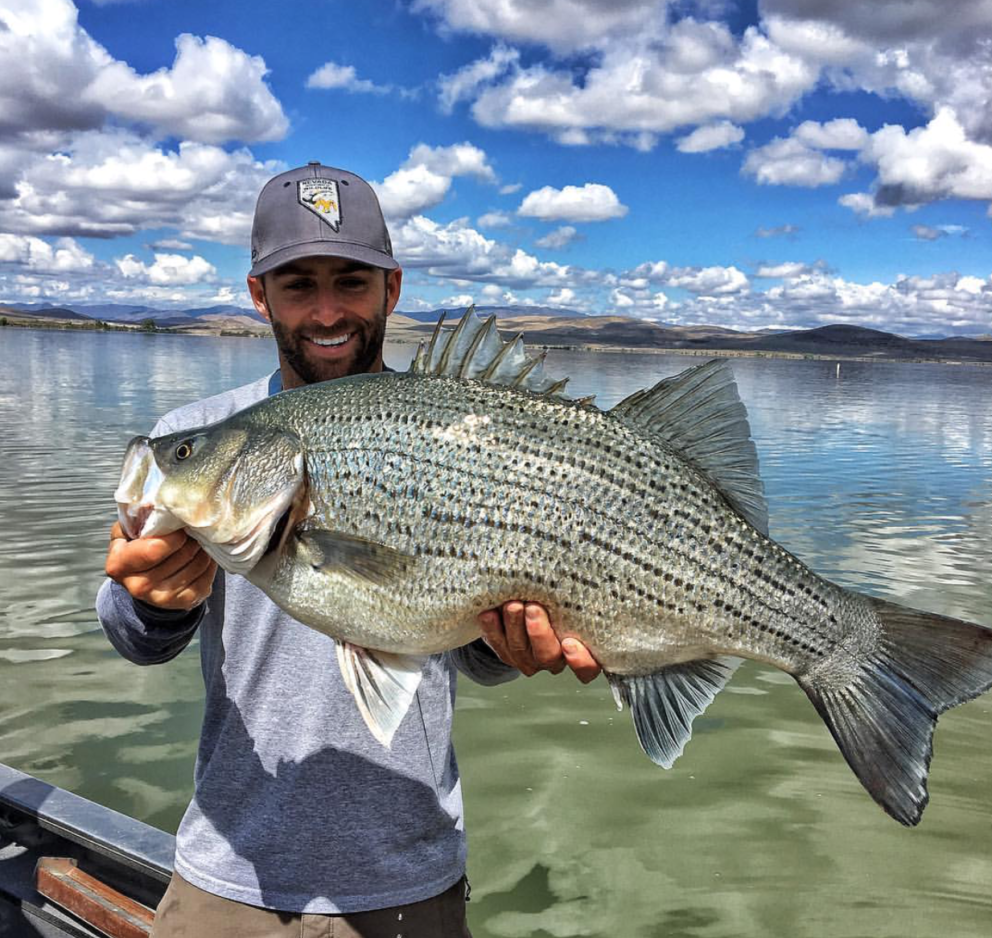- SCIENTIFIC NAME
- Morone chrysops x Morone saxatilis
- CLASSIFICATION
- Fish
- LIFE SPAN
- 7-9 Years
- SIZE
- 18-33” | 1-26lbs
- STATE CONSERVATION STATUS
-
- Unprotected
- FEDERAL CONSERVATION STATUS
- Least Concern
- GAME STATUS
- Game
- Washoe
- Humboldt
- Pershing
- Churchill
- Mineral
- Lyon
- Douglas
- Carson City
- Storey
- Elko
- Lander
- Eureka
- White Pine
- Esmeralda
- Nye
- Lincoln
- Clark
Habitat & Range
Because it is predominantly stocked as a sterile hybrid, it has no native range. It was first produced by hatcheries in the 1980’s and has since been stocked in lakes and reservoirs throughout North America. In Nevada, it has been introduced into Lahontan Reservoir, Wildhorse Reservoir, South Fork Reservoir, and elsewhere. It is generally found in larger, deeper lakes and reservoirs.
Threats
- Predation from carp eating eggs during spawn
Natural History
A game fish and a food fish, the Wiper became a part of United States aquaculture in the late 1980’s. They are known to be an aggressive feeder which puts them on the angler’s “to catch’ list. The Wiper surfaces to feed on baitfish, making the fish visible and easier to catch on a wide array of lures and baits.












